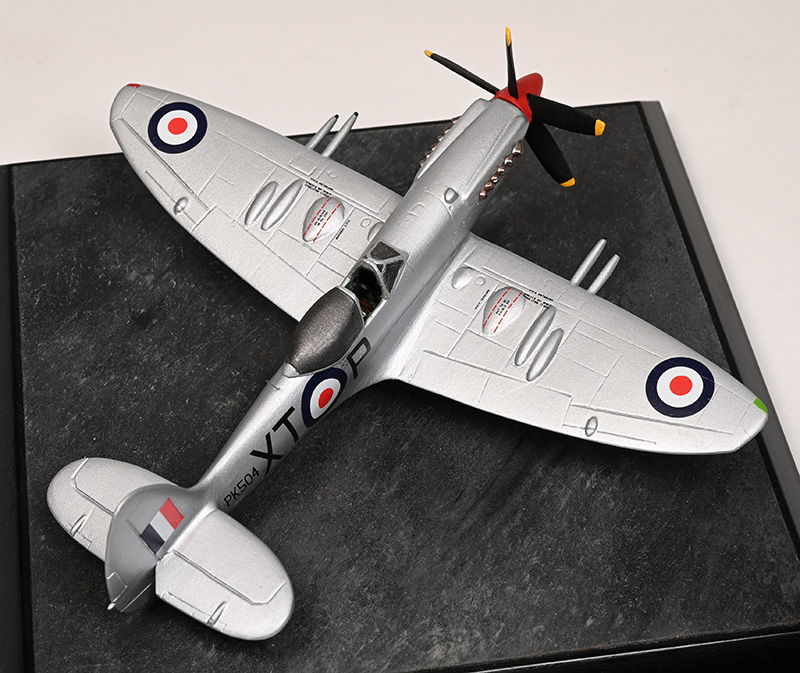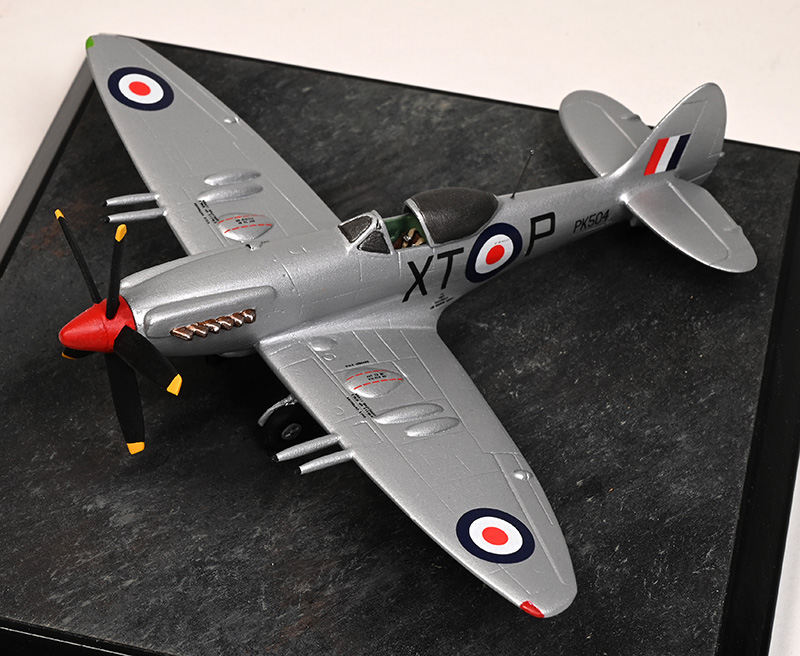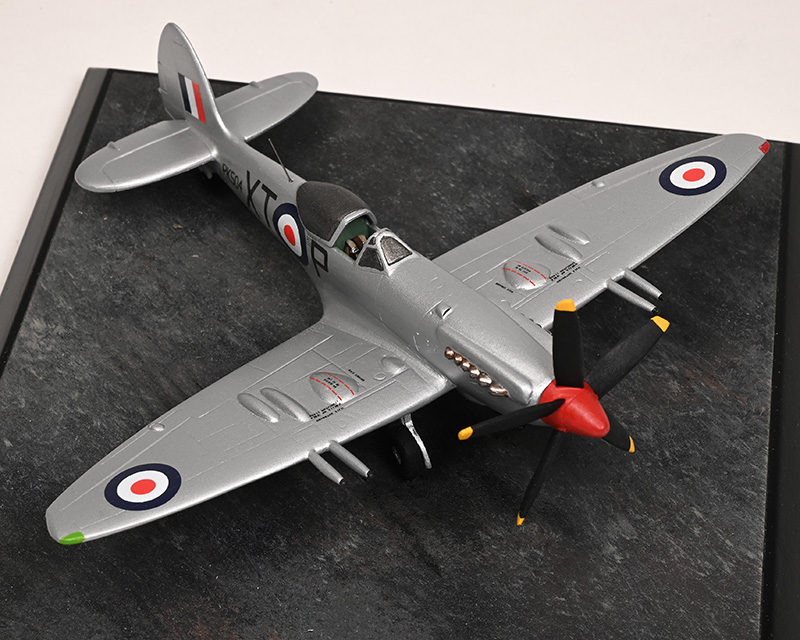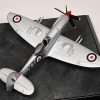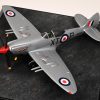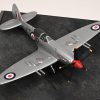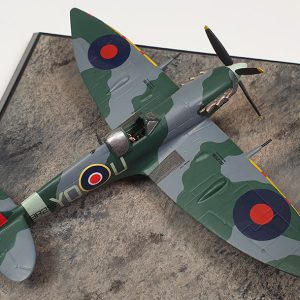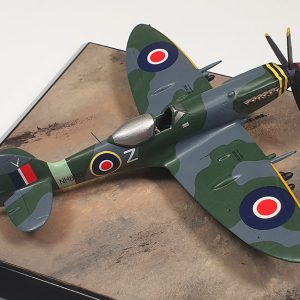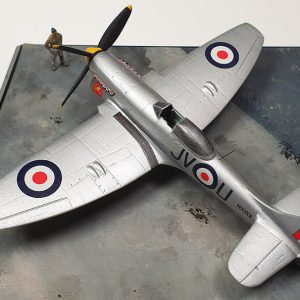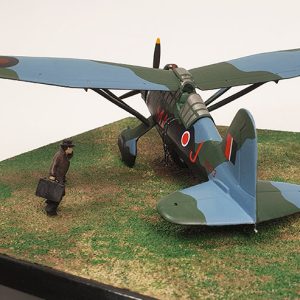Supermarine Spitfire F Mk 22 PK504 XT-P
603 Squadron RAuxAF, Turnhouse, 1949-50.
The Griffon-engined Spitfire F Mk 21 introduced a new wing to take advantage of the higher power available, and the Spitfire F Mk 22 had a reduced-depth rear fuselage with a larger vertical tail. It became the standard fighter of the Auxiliary squadrons, and serving with them wore RAx=x codes which showed their Reserve Command attribution. Not long after the Spitfire F Mk 22 was introduced the squadrons changed to two-letter unit codes, 603 resuming its wartime XT identification. 603 (City of Edinburgh) Squadron was formed in October 1925, the fourth such unit to be established; its initial equipment was DH.9As and Avro 504Ks. It was a bomber squadron until 1938 when it was transferred to No.12 (Fighter) Group, taking over Gloster Gladiators relinquished by 54 Squadron, and was awarded the 1938 trophy for the best all-round Auxiliary Air Force squadron. On 5 September 1939 the squadron’s first war patrol was flown, and ten days later their first Spitfires arrived. On 16 October 602 (City of Glasgow) Squadron and 603 were responsible for shooting down the first German aircraft over Britain since 1918, with 603 being given credit for the first kill. As with other Auxiliary squadrons, became an integral part of the regular air force for the period of hostilities; during this time 603 took part in the air defence of South-East England in 1940 and 1941 – fourteen Auxiliary squadrons took part in the Battle of Britain – and was re-formed as a Beaufighter strike squadron in the Mediterranean in 1942. It became a Spitfire squadron once again at the beginning of 1945 at Coltishall, engaged principally in low-level attack, and returned to Turnhouse in April 1945, disbanding that August. The following June it was re-formed with the Spitfire Mk XVIE, the aircraft with which it had finished the war, as part of the re-established Auxiliary Air Force, receiving the Griffon-engined F.22 in 1947; this gave way to jets in 1951 with the introduction of the Vampire. Like all the other Auxiliary squadrons it was disbanded in 1957 at the time of the Defence White Paper.
Spitfire F Mk 22 PK504 was built at Castle Bromwich and delivered to 33 MU at xx in September 1945. It joined 603 Squadron in May 1948, and was involved in an accident the following month but was repaired on site and returned to service. Initially marked as RAJ-P it retained its individual letter with the reversion of unit code. It remained with the squadron until they received Vampires in 1951, and was formally withdrawn from service in February 1953.


